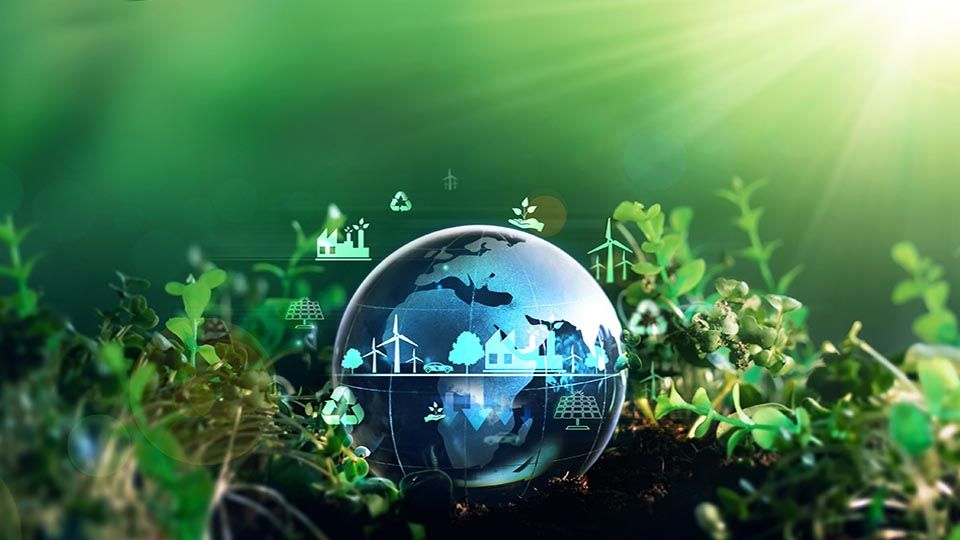High interest rates and a weaker global economy have been headwinds for clean energy equities over the past year. The growth some had expected did not quite materialise, and the MSCI Global Alternative Energy Index fell 27% in 2023, down 50% from its 2021 highs.
Yet despite the weak performance in publicly listed companies, the installation of global renewable power generation increased by nearly half in 2023, and in 2024 there are reasons for optimism. Three factors should help clean energy equities: first, the global rates cycle seems to be turning; second, there should be more clarity on the detailed terms of the US’ Inflation Reduction Act (IRA); and third, a bloated clean energy supply chain should normalise.
Rates cycle turning
Clean energy equities are particularly sensitive to interest rates: some clean energy companies generate bond-like cash flow streams, and higher interest rates mean the net present value of these cash flows falls. Others are long duration bets on the future with low profitability today and high profitability tomorrow (so, again, their value falls if interest rates go up).
US 10-year rates have since fallen closer to 4% and there is a growing consensus that the US economy can achieve a ‘soft landing’, that inflation will cool, and the Federal Reserve is finished with tightening. If the rates cycle has indeed turned, this would be a big boost for clean energy companies, but even a stabilisation in rates would be positive as lags in the system kick in.
For example, around a fifth of current US wind and solar assets are owned within a regulated utility footprint and it takes time to negotiate higher retail prices with the regulator to offset the higher cost of capital. In January, for example, PG&E, a US gas provider, announced a 13% increase in electricity prices in California after negotiations with its regulator.
IRA clarity
In the US, the boom in renewables driven by President Biden’s Inflation Reduction Act has proved slower to arrive than many had hoped. Passed in 2022, the benefits of the IRA can only be fully realised when companies understand how to qualify for the credits, particularly in relation to what counts as domestic manufacturing. There was more clarity provided on those issues in December and the release of further details in the months ahead should clear the way for companies to start taking advantage.
Will that open the door to a new wave of wind and solar projects? It should, although there is a question of what changes a Republican victory in November would bring. If Donald Trump wins, we would expect him to say he will repeal the IRA, although a president cannot do it on their own. Mr Trump will need a Republican clean sweep of Congress and the Senate to effect change. As the party learned with efforts to turn back Obamacare in his first term, institutionalised changes that have taken effect over several years and engaged billions in investment are difficult to reverse overnight.
The devil will be in the detail, and we think Donald Trump may scale back the electric vehicle subsidies that account for up to a third of the cost of the IRA. The expiration date on some wind and solar tax credits may change from 2032 to a rolling four-year approval process but he is unlikely to cut those domestic wind and solar tax credits that create jobs in the US.
What Trump would be able to do on his own is set trade policy, and any tightening in tariffs or quotas would be good for domestic manufacturers.
Supply chain normalisation
Another problem for the sector is the build-up of excess inventories in the supply chain, and many areas are oversupplied at the moment having geared-up for high growth that didn’t quite materialise. Suppliers are now restricting capacity growth to let demand catch up. The re-balancing is likely to be completed by the middle of 2024 for the more consolidated parts of the supply chain, but will take until 2025 in the more commoditised parts.
Fight for the future
It is also worth remembering the underlying business logic of the clean energy sector. Regardless of the green ideas behind it, for a Republican party that still sees itself as pro-business renewables will be an enormous market worth fighting for. According to the International Energy Agency, some $4.2trn must be invested annually by 2030 – up from $1.8tn today – for the world to transition to net zero by 2050. The EU says it needs to spend around €620bn annually to meet its Green Deal and RePowerEU objectives. That is a lot of jobs, and if a new government undermines US investment in the sector, business will go elsewhere.
In a year when over 40 countries will go to the polls, including the US and India, as well as the European Union, nothing is certain about future policy direction. But with policymakers, investors and civil society around the world seeking to drive funds towards the transition and many countries already suffering from the fallout of the hottest year on record, the pressure to move towards clean energy is not going away.








